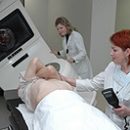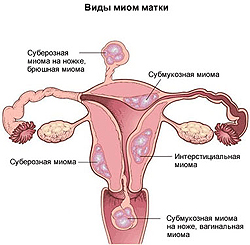What is the reason for the development of ovarian cancer? What are the risk factors for the development of ovarian cancer? Read this article.
Content
Causes of ovarian cancer
Until the present, the exact cause of ovarian cancer is not known. However, there are some risk factors that can contribute to the development of this tumor. Risk factor is something that increases the likelihood of disease. With different tumors there are risk factors. Some risk factors, such as, for example, smoking, can be changed, others (age, race) - Change it is impossible.
The emergence of most malignant ovarian tumors cannot be explained by famous risk factors. It is important to remember that risk factors increase the likelihood of disease development, but not necessarily.
Ovarian risk risk factors
 Some risk factors for the most common types of ovarian cancer:
Some risk factors for the most common types of ovarian cancer:
Age. Most ovarian tumors occur after menopause (termination of menstruation) at the age of 65 or more.
Menstrual periods. There is a relationship between the number of menstrual periods throughout the life of a woman and the risk of ovarian cancer. Among women who have menstruation early (up to 12 years) and stopped after 50 years, the risk of ovarian cancer is low. It also applies to women who did not have children or they appeared after 30 years.
Conversion preparations. Prolonged use of drugs that contribute to conception (especially if the pregnancy has never come), may increase the risk of ovarian tumors of a low degree of malignant, however, infertility also increases the risk of ovarian cancer, even without receiving drugs that contribute to conception.
Family history. The risk of ovarian cancer is higher among women who have close relatives (mother, sister, daughter) suffered such a disease. This refers to relatives, both from the mother, and the Father. The risk increases if the ovarian tumor was revealed to relatives at a young age. One of 10 cases of ovarian cancer is associated with genetic changes.
Mammary cancer. In women who underwent breast cancer, the risk of ovarian cancer is increased.
Talc. There is a slightly increased risk of ovarian cancer in women who used Talc to the crotch area. This can be explained by the presence of asbestos in powder.
Estrogen replacement therapy. Long (10 or more years) The use of substitution therapy with estrogen after the occurrence of menopause somewhat increases the risk of ovarian cancer. In women who have taken replacement therapy for less than 10 years or ceased such treatment over 15 years ago, have a low risk of ovarian cancer. Combined hormonal replacement therapy progesterone and estrogen little affects the risk of ovarian cancer or does not affect. Such treatment is no longer used, except in cases where the woman moved the removal of the uterus.









